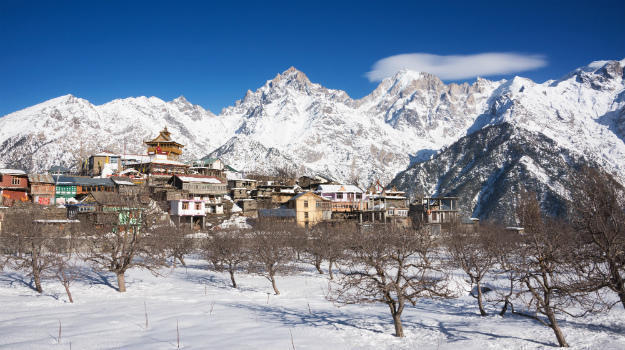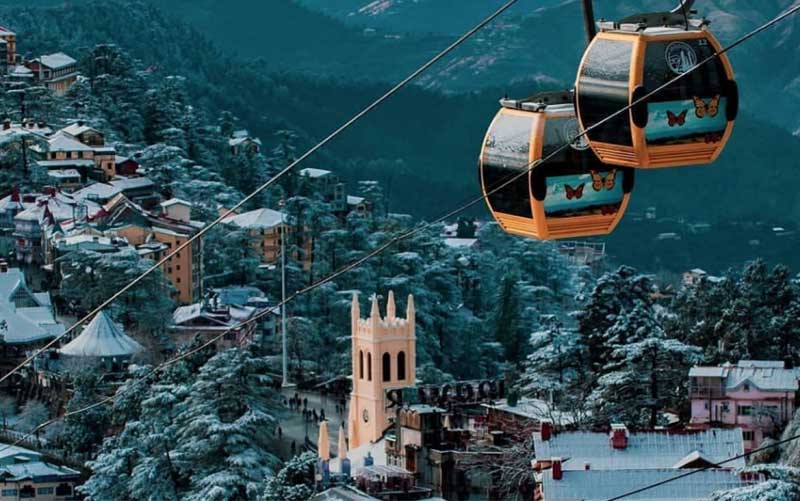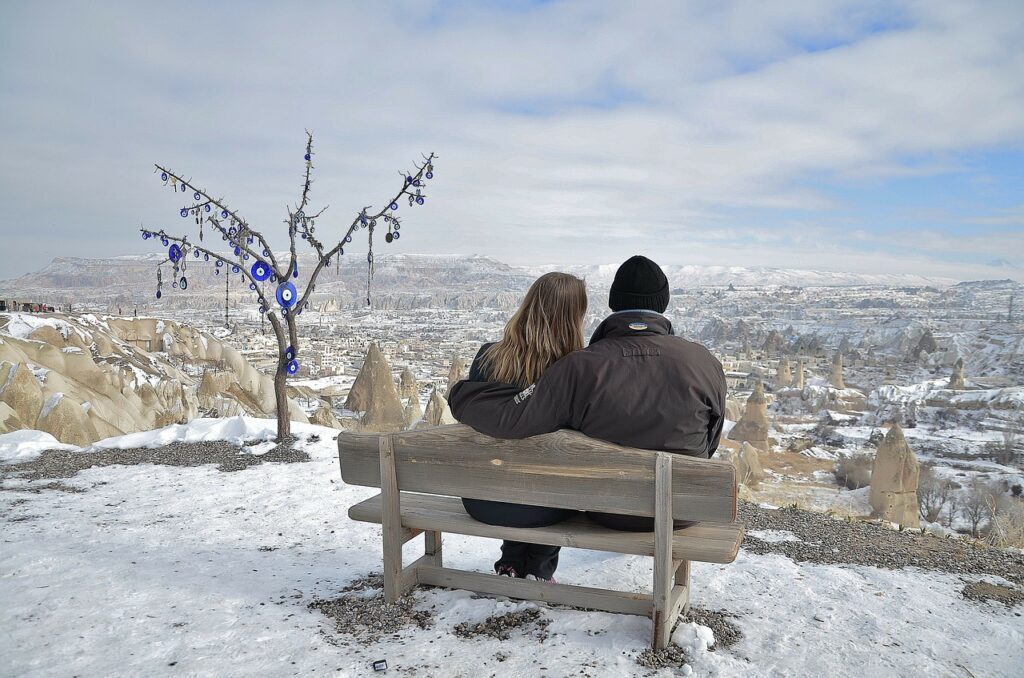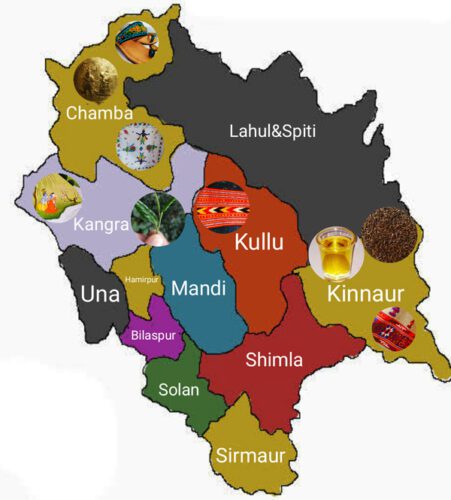Why do tourists love to visit Kinnaur Spiti?
Tourists from all over the world visit Kinnaur Spiti year after year. This region of Himachal Pradesh has hefty tourist traffic during the summer season, which lasts from March to May. Many people also visit this region between October and November to participate in the Shimla Flower Show. The reason why so many people visit Kinnaur Spiti during these months? One word: the weather! The climate here is delightful in summer, with cool days and comfortably warm nights.
Climate And Weather
The climate and weather of Kinnaur are influenced by two of Asia’s largest glaciers, Markha and Biafo. The travel season in Kinner-Spiti is from April to October, when it’s possible to explore all its locations without restrictions. Most trekking enthusiasts plan their trips in mid-May, early June or September-October when there are no restrictions, and you can enjoy pleasant weather during these months.
There will indeed be heavy tourist traffic and Kinnaur Spiti tour packages available during these months compared to other months, so be prepared for high room rates, heavy traffic on roads, and food being sold out at popular places like Barsu Village. The temperatures in Kinnaur range from 8 degrees Celsius to 30 degrees Celsius during summer, which is considered peak season.
The region also has a monsoon season, making it difficult for visitors to explore Kinnaur’s stunning landscapes. It is not advisable to visit Kinnaur during the rainy season due to landslides. In and around Kinnaur, there are numerous tourist attractions.
The Shivling, a natural stone on the top, has religious significance. Kinnaur has a temperate climate due to its high altitude, with long winters lasting from October to May and brief summers ranging from June to September. During the winter season, the lower portions and valleys receive a small amount of rain.The Kalpa Valley and the Sangla Valley are the most popular tourist destinations. Kalpa is regarded as the best spot in the Himalayas for viewing spectacular sunsets and sunrises across the Kinnaur Kailash Range. The two must-see attractions near Kalpa are Chitkul Village and Roghi Village. They are 28 and 7 kilometres apart from Kalpa, respectively. Take a bus from Delhi or Chandigarh to go to Kinnaur, which runs every day.
Places To Visit
The places that attract tourists are Chandra Taal, Tikuji Pass, Sumdo, Renuka Lake and Kunzum La Pass. Kinnaur Spiti tour package includes visiting Chandra Taal and Tikuji Pass for trekking and sightseeing. The other lakes are ideal for boating. Kunzum La is known for its apple plantations and wildlife park. All these places offer an experience of a lifetime to tourists. Kinnaur Spiti tour package is available for those who come here in the summers. They even enjoy pleasant weather during the monsoon season, so visiting during winters is not a bad idea!
Kinnaur Valley in Himachal Pradesh is marked by majestic mountains, green valleys, meandering rivers, orchards, and vineyards. Because it shares a border with Tibet, Tibetan culture dramatically influences it. Like Spiti and Lahaul, Kinnaur is renowned as the “Land of Fairytales” and is snow-covered for six months. Kinnaur is separated into three administrative areas: Pooh, Kalpa, and Nichar. Kinnaur is divided into two central valleys: Sangla Valley and Hanging Valley.
Things To Do in Kinnaur and Spiti
The most significant part of a trip is often left for last: What will we do when we get there? The time crunch and confusion that so many travellers feel is why most spend very little time in these regions. But just because you can’t spend weeks in a place doesn’t mean you can’t squeeze all of your favourite activities into one weekend, or even one day. Here are some ways to make sure you make the most out of your short vacation to Kinnaur and Spiti.
Tourist Destinations Nearby
Shimla, Kufri, Narkanda and Kasauli are popular destinations near Shimla. You can buy a Kinnaur Spiti tour package or travel to Kinnaur by car or take a taxi at affordable prices. Travelling on a short trip along beautiful routes such as the Banjara route (Rupin Pass), Rohtang Pass, and Ponggala Path (Kashmir Road) makes your trip memorable. At Sainj, you can see the Rudugair river flowing from Tibet and entering India at the Indo-China border. You can meet people of Ladakhi origin and trade in Yarkandi local goods at Track, India’s easternmost town, just 18 km away from Sainj in Indian territory.
Even though Himachal Pradesh is a beautiful state for which words are inadequate to portray its majesty, many visitors make the mistake of viewing Shimla as a tribute to the entire state. Not only does Shimla leave its mark on Himachal Pradesh, but there are various metropolitan communities, locales, and so on, all of which are suitable for providing your eyes with a pleasant, great experience. There are many travellers and metropolitan areas to visit in Himachal.
Kinnaur, along with Bushahr, is known for its breathtaking mountain and valley scenery and a unique social and cultural mix that shifts from Aryan Hindu to Tibetan Buddhist as you travel east.
Kinnaur is around 235 kilometres from Shimla, the state capital of Himachal Pradesh, which is located in the upper east corner of the state and is bordered on the east by Tibet. It has three high mountain ranges, the Zanskar, Himalayas, the Sutlej, Spiti, and BSP valleys and their tributaries. Thick wood, plantations, fields, and villages protect the inclines. Kinnaur is a distinctive shake Shivling (Shiva Lingam) on Mount Kailash’s peak. In 1989, the territory was made accessible to untouchables. The old Hindustan-Tibet highway passes through the Kinnaur Valley along the Sutlej River before entering Tibet at Shipki La Pass.
This area is recognised for edge villages with record-roofed sanctuaries and uncountable apple plantations separated by gorges and backed by soaring snowcapped peaks. Past it, travellers can unite remote Spiti with Kinnaur to form a Shimla–Keylong circle across the never-ending beautiful terrain.
Kinnaur, after Solan, is the most expensive region in Himachal Pradesh in terms of per capita income.














